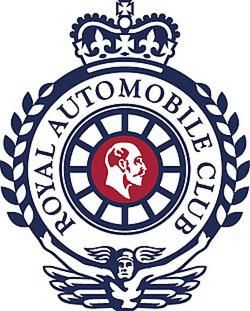Vehicle theft: how it happens, and what can be done to prevent it - advice from Lockton
)
Certain luxury SUV’s in particular have been the target of thieves for some time. However, a spate of thefts of modern high-end sports and supercars in Central London has underlined the black-market appeal of luxury cars.
The purpose of this article is to provide insight into how criminals are able to steal these vehicles which are, in many cases, fitted with security systems including tracking devices. It also offers advice for vehicle owners around selecting the optimum security system.
Criminals targeting below-ground car parks
Below-ground car parks have become a popular location for thieves hoping to target cars. Many of these facilities use automatic number plate recognition (ANPR) systems to log vehicles entering and leaving, which are used to either calculate parking charges or identify those who have pre-paid. In the case of facilities used by hotels and residential complexes, they are also a way of identifying cars owned by guests and occupants.
To conduct vehicle thefts, criminals will identify the target car(s) within the facility, before then entering the car park in another vehicle. They use illegally manufactured and acquired devices to neutralise vehicles’ on-board security systems. In effect, these devices act to clone keyless fobs and trick the vehicle into believing that the thief is the owner.
Alternatively, certain tracking systems can be jammed using similar sourced devices and, in some cases, factory installation location can be compromised. This means that the tracking unit can either be physically removed or its signal blocked.
These methods render vehicle security ineffective. Once inside, thieves simply drive the vehicle to the exit, where its registration is recognised by the ANPR, and the vehicle is allowed to leave. If exit isn’t permitted, thieves have in some instances rammed their way out of the car park.
Stolen vehicles are shipped abroad
Once vehicles have been successfully stolen, they are quickly removed from their last location. A common practice employed by thieves is to leave vehicles parked in plain sight, to determine whether any secondary tracking systems are fitted and in operation. When it’s clear that this is not the case, the vehicle is then removed and usually taken to a port for shipping out of the UK.
Luxury SUV’s are either moved on or dismantled for their mechanical components. Prime targets here include the vehicle engine and gearbox, and any other parts that are currently difficult to obtain due to supply chain shortages. These parts make their way back into the global black market. Other luxury and sports cars will be shipped to countries where it will be almost impossible to recover them.
Stolen luxury vehicles have increased in value on the black market recently, making them even more attractive to criminals. Suffice to say there are territories where many goods, including high-value vehicles, are difficult, if not impossible, to acquire legitimately. Criminality at this level is highly organised, and operates on an international level.
How to prevent vehicle theft
Insurers, brokers and vehicle and automotive security manufacturers alike are all feeling a sense of frustration at the current situation.
The good news is that some manufacturers are already reacting by improving the security they fit to vehicles as standard. Currently, the highest classification of security available is Thatcham Category S5. Vehicle security systems that meet this standard combine a tracking system with automatic driver recognition (ADR). A premium tracking product, ADR uses small tags – which a driver usually keeps on their person – to identify owners as approved drivers. When a vehicle is moved without tags present, an alert is automatically sent to the owner directly.
Category S5 replaced the previous Category 5, which required security systems to include a remote electronic immobiliser. All previous Category 5 systems are automatically compliant for Category S5. Many S5 systems also include technologies to provide added resilience against devices designed to overcome factory-fitted security.
Lockton is working with several vehicle security companies to provide our clients with guidance around vehicle protection, and to ensure that security installations are carried out to the high standard of service.
Visit the Lockton Performance website for more information around vehicle protection, or speak to us today for further advice.
|
Simon Ambler T: +44 (0)121 232 4581 M: +44 (0)7984 647445 |
 |







.resize-500x189.png)







